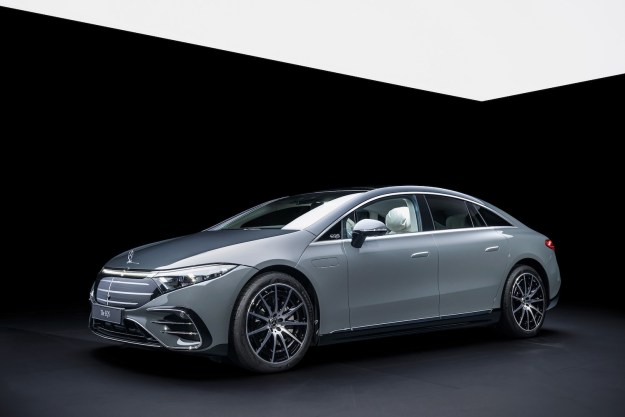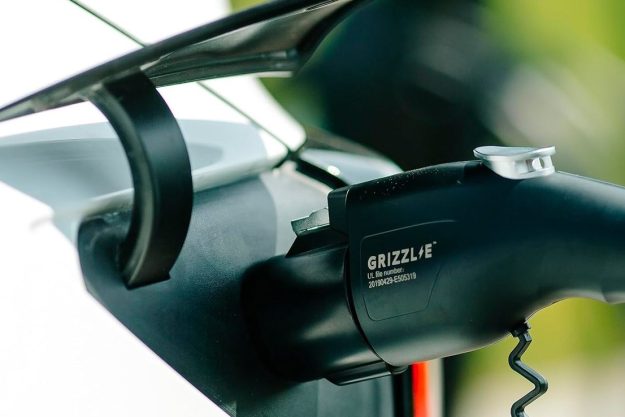The golden age of arcade games brought innovation to the industry, particularly when it came to racing titles. Early driving sims featured a steering wheel and gear shifter, and cockpit-style cabinets added a throttle and brake pedal. The introduction of force feedback offered further immersion. This was how a young Ben Collins first honed his virtual driving skills, which would later lead to his storied career as a professional racer. You may also know him as the helmeted tame racing driver from the Clarkson/Hammond/May era of Top Gear.
Ben took on the role of the Stig for nearly a decade, during which Top Gear became one of the most popular television shows in the world.
“I grew up in America in the ‘80s, the dawn of the arcade games — stuff like Outrun — and I really enjoyed those.”
Outside of the his role as TG’s silent white-suited sentinel, Ben has raced in 24 Hours of Le Mans, V8 Supercar, Formula 3, the British Touring Car Championship, FIA World Endurance Championship, and American stock car series. He also worked behind the scenes as a precision driver for TV series, commercials, and films, including Skyfall and The Dark Knight Rises.
Ben caught the attention of Slightly Mad Studios, developers of racing sim Project Cars. It was released in May 2015 for Microsoft Windows, PlayStation 4, and Xbox One, and also features virtual reality support.
Digital Trends spoke with Ben about his history and work with Project Cars.
Digital Trends: How did you get involved with Project Cars?
Ben Collins: I was contacted by the head of the studio, Ian Bell (not to be confused with Digital Trends Founder and CEO Ian Bell) and it was good fortune that I played lots of car games in the past. I was always underwhelmed by how they felt; they were never very realistic, with few exceptions. I was talking about this with the press, and Ian saw that, and thought that having a cynic aboard would be a good thing.
What was your experience with these types of sims before Project Cars?
I grew up in America in the ‘80s, the dawn of the arcade games — stuff like Outrun — and I really enjoyed those. And I found that simulator games were far too tricky, or the car would be very numb. The thing wouldn’t steer towards the corner, or it would steer and then spin. The best simulator game I played was MicroProse’s GP2 for PC. It was simple, but I played that on a daily basis. It was a good test of concentration, and you could adjust the car a bit.
Have you tried the game with different platforms and peripherals?
In terms of what I use at home, I stayed with a fairly standard chair and wheel system, but I’m hoping to upgrade to the Vesaro. I tried one earlier this year, and you really get feedback through the steering wheel. I stayed with PC the whole way through. Occasionally, I’ve jumped on PlayStation just to get a feel for it. There are many different parameters and I try to keep my system the same throughout. If you’re jumping around it’s hard to tell what has changed. Has the tire model changed, or is it that you’re in a different chair?
“The perfect application for the Oculus is driving games, flying games. Having that 360 degrees, I was absolutely blown away by how that makes you feel.”
It’s impossible to replicate g-force, and I don’t like the rigs that roll around. I drive by the seat of my pants and those g-forces are incredibly important clues as to what’s happening in the car. The feedback in the steering wheel is essential. When you feel the limit of a tire, and it’s locking, you can feel that in the wheel.
What are your thoughts on VR devices like Oculus Rift?
It’s just killer, it’s amazing. The perfect application for the Oculus is driving games, flying games. Having that 360 degrees, I was absolutely blown away by how that makes you feel. You see your hand moving, you see the wheel, and you are there in that world. And for racing especially, being able to look in the mirrors and through corners … you just turn your head.
You’ve experienced many different cars and forms of motorsport throughout your career. How are those differences represented in the game?
I’m extremely lucky. I’ve driven hundreds of different cars, from supercars to you name it. When I was a kid, I used to get very confused if I was racing a single seater then getting back in a road car. I felt like I had gone from riding a motorcycle to driving a tractor. But with a lot of experience, I learned to love adapting quickly to new cars.
In Project Cars, you’re sitting there and you click a button and one minute you’re driving a GT car at Le Mans, you press another button and suddenly you’re in a formula car, and then you’re in a street car, like an M3. That can be confusing if you’re not ready to change mindset to new levels of grip, high power to low power, ‘80s turbo era to modern power, and coming back to turbos now.
Is the artificial intelligence in the game realistic?
In the beginning, I thought that the AI felt slightly psychotic and suicidal. But then again, the way I was driving, maybe somebody could have said the same thing about me. When you’re making big changes in those games, with the different patches on the software, things like the AI do go a bit crazy. In the finished product, it’s really come back to where it should be. It does feel realistic, and it’s something that we’re always playing with.
With Project Cars, I don’t feel too much of a pull to leave the AI and go online to get something that’s more realistic. But with a shooting game, I do feel that immediately. Games like Call of Duty and Halo, going online you get that more authentic feel.
“I thought that the AI felt slightly psychotic, and suicidal. But then again, the way I was driving, somebody could have said the same thing about me.”
What is your favorite combination of car and track in Project Cars, and does that match your real life preference?
My favorite track and car will be my favorite in real life, though I’m not sure how safe it will be. Oulton Park in particular is a track I love that’s beautifully rendered in the game. I’ve used it to test how closely we’ve achieved the track mapping. If there’s one place I know extremely well, where I know every bump and curve, it’s that track. And it’s there in the game; there’s a rhythm to the bumps and the flow of the circuit, and that’s highly addictive.
At Le Mans, there’s a big bump when you go into the Mulsanne Straight, and where the road is grooved, the car walks around [and] does strange things in real life. So they recorded the bump into Project Cars, but it was so big that the wheels were spinning. That’s my job, to tell them “This bump is doing too much.” So we dialed it back.
Back to your question, Oulton Park in the Le Mans Prototype, LMP1, is my favorite thing. If it’s just for fun, I try to get pretty much the fastest car I can. One that really can dance around and has good grip as well.
Project Cars players range from those with real-world track experience to those who have only raced in video games. How do gaming and racing experience come into play, and how accessible is the game?
I get my butt kicked pretty hard by some of the pro sim racers. We’ll never give up developing, and the more nuances that we can feed into the sim, hopefully that’s going to benefit me at their expense. I know what I’m capable of with a car, and the gap between the sim and real life is closing all the time. I think virtual reality will take it another step in that direction.
The sim is very accessible, and I think that’s just fantastic. Real racing cars are unbelievably expensive. Nobody would ever dream of getting to drive something like an Aston Martin GT3 Le Mans car. But with the game, you can do it. You may not be immediately quick, but so what? You won’t kill yourself in your living room and you have a good time learning.

Esports are becoming increasingly competitive. Can sim racing catch up to actual motorsports? You did mention having your virtual butt kicked …
I don’t mind having my virtual ass kicked, but you do get really into it. You go into the championship mode, you know you want to progress through the game, and suddenly the qualifying session matters. You want to get on pole position, win that race, and win the championship.
That real pressure has to be there or you take it for granted. Esport takes that to the maximum level. There’s prize money at stake, there’s reputations, you’re with a team; these guys have sponsors. Esport is showing that there are people willing to dedicate time in crafting their skills and knowledge of how the cars work and how to tune them. Those are two core things that take years of real experience to get.
That said, you’ll never be able to replicate the reality of what goes on when you make a mistake in real life. It is different, but it’s evolving all the time. If you look at Formula One these days and how they assess people — and even in GT level now — it’s like, “Come on, come along and drive our sim, let’s see how you’re doing.” And there’s a job on every team for a sim tester. He doesn’t really get involved at the race track. And all the current drivers are working on the sim.
There’s a very close alignment now between skill on the sim and reality. For those who want to make the transition, I think it’s brilliant that there’s an open world where they can develop their skills, mindset, and professionalism and make the transfer. And it’s been proven to work.






